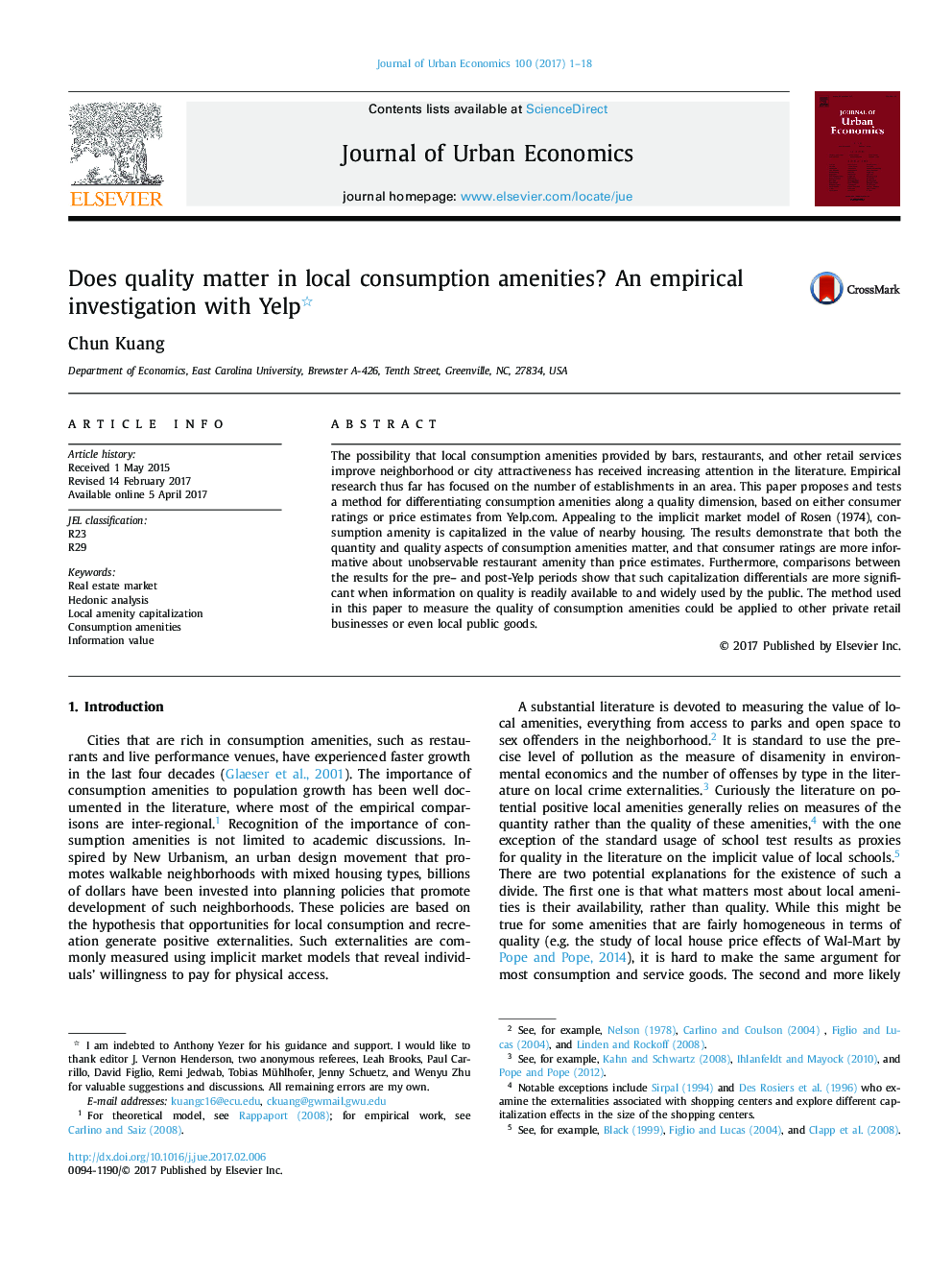| Article ID | Journal | Published Year | Pages | File Type |
|---|---|---|---|---|
| 5101928 | Journal of Urban Economics | 2017 | 18 Pages |
Abstract
The possibility that local consumption amenities provided by bars, restaurants, and other retail services improve neighborhood or city attractiveness has received increasing attention in the literature. Empirical research thus far has focused on the number of establishments in an area. This paper proposes and tests a method for differentiating consumption amenities along a quality dimension, based on either consumer ratings or price estimates from Yelp.com. Appealing to the implicit market model of Rosen (1974), consumption amenity is capitalized in the value of nearby housing. The results demonstrate that both the quantity and quality aspects of consumption amenities matter, and that consumer ratings are more informative about unobservable restaurant amenity than price estimates. Furthermore, comparisons between the results for the pre- and post-Yelp periods show that such capitalization differentials are more significant when information on quality is readily available to and widely used by the public. The method used in this paper to measure the quality of consumption amenities could be applied to other private retail businesses or even local public goods.
Related Topics
Social Sciences and Humanities
Economics, Econometrics and Finance
Economics and Econometrics
Authors
Chun Kuang,
